Photo Source: Nariman el-Mofty,AP Photo

National Institute of Advanced Studies (NIAS)
Indian Institute of Science Campus, Bangalore
For any further information or to subscribe to GP alerts send an email to subachandran@nias.res.in
NIAS AFRICA STUDIES
Persisting Ethnic Cleansing in Ethiopia's Tigray Region: Four Takeaways
 |
Anu Maria Joseph
|
Report Review
Persisting Ethnic Cleansing in Ethiopia's Tigray Region: Four Takeaways
Anu Maria Joseph
On 1 June, Human Rights Watch (HRW) released a report titled "Ethiopia: Ethnic Cleansing Persists Under Tigray Truce." The Deputy African Director of the Human Rights Watch, Carine Kaneza Nantulya, stated: "The November truce in northern Ethiopia has not brought about an end to the ethnic cleansing of Tigrayans in Western Tigray Zone; If the Ethiopian government is really serious about ensuring justice for abuses, then it should stop opposing independent investigations into the atrocities in Western Tigray and hold abusive officials and commanders to account."
The Human Rights Watch has called on the Ethiopian government to "suspend, investigate and appropriately prosecute" officials who have committed human rights abuses in Western Tigray.
On 6 June, Al Jazeera quoted the Ethiopian government rejecting the allegations by the HRW, stating: "This distorted and misleading portrayal of the situation attempts to undermine peaceful coexistence and fuel inter-ethnic conflict and obstruct the national efforts for peace and reconciliation.”
The conflict in Ethiopia's Tigray region between the Ethiopian federal forces, Tigray People's Liberation Front (TPLF), and respective allies (Amhara forces, Eritrean forces and Oromo Liberation Army (OLA) ended with the signing of a peace agreement in November 2022. Although the deal has ended the hostilities, ,the peace remains negative in Tigray. The report by the HRW says the Ethnic Tigrayans are being targeted, facing human rights violations and forced expulsions.
Following are four takeaways of the HRW report.
1. Continuing ethnic cleansing of the Tigrayans despite the peace agreement
During September 2022-April 2023, HRW interviewed 35 people, including the victims of the abuses, aid agencies and witnesses. It found out that despite the truce agreement, Amhara security forces known as "Amhara Liyu," a militia group known as "Fano," and interim authorities were engaged in forced expulsions, killings in detention, torture, and inhuman treatment of ethnic Tigrayans in Western Tigray Zone. The detainees were held for an extended period in police stations, prisons, military camps and other unofficial sites in the region. Several interviewees said 70 people, including residents and detainees, were forcibly expelled from the Western Tigray region. HRW quotes a Reuters report on the Fano militia expelling 2,800 people from five detention sites in Western Tigray in early November, including men, women, and children. Nearly 47,000 UN registered displaced people in Sudan told HRW they are threatened by officials and security forces in Tigray against returning home.
2. Lack of accountability and justice to the human rights abuses in Tigray
The Ethiopian government has shown little interest in prosecuting those who committed human rights atrocities in Tigray. An Inter-Ministerial Task Force set up by the Ministry of Justice had previously promised to investigate the atrocities in Western Tigray by December 2022. The government has not yet released any details of these inquiries or prosecuted anyone for the atrocities. When Ethiopia was under review by the UN Committee against Torture in May, Ethiopian officials downplayed the allegations of ethnic cleansing.
3. Little international monitoring and investigations in Western Tigray
Although the international actors, including the EU and the US, had emphasized the priority of justice for the victims of human rights atrocities, they failed to initiate concrete benchmarks to hold the perpetrators accountable. Instead, right after the signing of the peace agreement, many actors, including the US and the EU, sought to revive strained relations with the Ethiopian government besides stressing accountability for the atrocities. On 15 March, Prime Minister Abiy Ahmed met US Secretary of State Antony Blinken to strengthen bilateral relations. On 4 April, the EU foreign policy chief, Josep Borrel, said that the normalization of ties with Ethiopia would depend on the development of the peace process and refrained from addressing the lack of progress on justice for the victims.
4. Emphasis on the need for monitoring by national, regional and international actors
The report has emphasised the role of national, regional and international actors in monitoring the human rights abuses in Tigray. The HRW calls on the Ethiopian government to ensure that human rights monitors, including the National Ethiopian Human Rights Commission and the UN Office of the High Commissioner for Human Rights, have access to the conflict-hit regions to conduct investigations. It emphasizes the need to establish an independent body for the Ethiopian government to monitor the repatriation of displaced communities. It highlights that the African Union Monitoring Mission, which is to visit Western Tigray in June, should publicly report on rights abuses and humanitarian access in the region. It stresses concerted efforts by international actors to support the mechanisms of monitoring and investigating violence.
In perspective
This is not the first time ethnic cleansing has been reported in Tigray. Since the conflict broke out in November 2020, Tigrayans have been ethnically targeted. HRW released similar reports on ethnic cleansing in Ethiopia during April, June and December 2022. Although the peace agreement in Tigray mentions justice to the victims of the abuse, an end to a civil conflict between two forces, TPLF and Ethiopian federal forces, does not mean an end to ethnic indifferences. Referring to a truce as a yardstick for a sudden end to ethnic cleansing is unfeasible. The issue lies deep within the ethnic complexities of Ethiopian society. Ethnic issues in Tigray need to be addressed through the grassroots. The recommendation for a comprehensive monitoring mechanism has a relativity that it will unlikely address the issue.
(The commentary was previously published as part of the Conflict Weekly.)
About the Author
Anu Maria Joseph ia s Research Assistant at NIAS.
| |
Bookmark |
Nithyashree RB
Continuing Human Rights Issues in Ethiopia: Takeaways of the UN report
Anu Maria Joseph
Persisting Ethnic Cleansing in Ethiopia's Tigray Region: Four Takeaways
NIAS Africa Team

